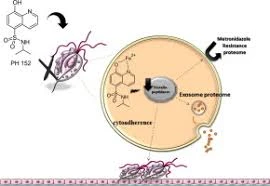
Dec . 23, 2024 11:34 Back to list
Management Strategies for Poultry Necrotic Enteritis in Commercial Farms
Poultry Necrotic Enteritis Understanding the Disease and Its Impact on Poultry Production
Poultry necrotic enteritis (NE) is a significant health concern in the poultry industry, characterized by the inflammation and necrosis of the intestinal tract. This disease primarily affects chickens and turkeys, causing substantial economic losses due to increased mortality, reduced growth rates, and decreased feed efficiency. Understanding necrotic enteritis, its causative agents, and effective management strategies is essential for poultry producers aiming to maintain flock health and optimize production.
Causative Agents
Necrotic enteritis is often associated with the presence of Clostridium perfringens, a bacterium that is normally found in the intestines of poultry without causing disease. However, under certain conditions, particularly an imbalance in gut microbiota, C. perfringens can proliferate and produce toxins that lead to tissue damage and inflammation in the intestinal lining. Factors such as co-infection with other pathogens, dietary changes, stress, and poor management practices can trigger the conditions conducive to the development of necrotic enteritis.
Prevalence and Risk Factors
The prevalence of necrotic enteritis varies globally, but it is particularly notable in intensive poultry production systems. Risk factors include
1. Dietary Formulation Diets high in protein and starch can promote the growth of C. perfringens, increasing the likelihood of necrotic enteritis. The quality of feed and the presence of anti-nutritional factors can also contribute to gut health challenges.
2. Management Practices Poor litter management, high stocking densities, and inadequate biosecurity measures can all increase stress and the likelihood of disease outbreaks. Stress from environmental factors such as heat or transportation can further predispose birds to intestinal disorders.
3. Cocontagious Infections The presence of other enteric pathogens, such as Eimeria (the causative agent of coccidiosis), can create an environment where necrotic enteritis thrives. Coccidiosis damages the intestinal lining, providing an entry point for C. perfringens.
Clinical Signs and Diagnosis
Chickens affected by necrotic enteritis may exhibit several clinical signs, including lethargy, reduced feed intake, diarrhea with a foul odor, and sudden death. The disease can progress rapidly, leading to significant mortality within a short period. Diagnosis is typically confirmed through a combination of clinical observations, necropsy findings, and laboratory analysis to identify the presence of C. perfringens and assess toxin production.
poultry necrotic enteritis factory

Economic Impact
The economic impact of necrotic enteritis is profound, with losses arising from increased mortality, decreased weight gain, treatment costs, and reduced feed conversion efficiency. In farms with high incidences of NE, producers may experience up to 20% mortality in severe cases, leading to significant financial losses. Additionally, the long-term effects of the disease can result in shifts in production practices and increased reliance on veterinary interventions.
Prevention and Management Strategies
Successful management of necrotic enteritis hinges on a combination of preventive and therapeutic strategies
1. Dietary Adjustments Formulating diets that are lower in protein but rich in fibers can help maintain a balanced gut microbiota. Incorporating additives such as probiotics and prebiotics can further promote intestinal health.
2. Biosecurity Measures Ensuring robust biosecurity practices can minimize the risks of disease introduction and spread. This includes maintaining clean housing environments, effective litter management, and controlling access to poultry facilities.
3. Vaccination While there is no specific vaccine for necrotic enteritis, vaccinations against other diseases, such as coccidiosis, can help reduce the incidence of coinfection and lower the risk of NE outbreaks.
4. Monitoring and Early Intervention Regular monitoring of flock health, feed consumption, and environmental conditions allows producers to identify potential diseases early. Swift intervention can help mitigate the impacts of necrotic enteritis.
Conclusion
Poultry necrotic enteritis poses a considerable challenge within the poultry industry, necessitating a comprehensive understanding of its causes and effective management strategies. By adopting best practices in nutrition, biosecurity, and flock management, poultry producers can mitigate the risk of necrotic enteritis and ensure healthier flocks, ultimately bolstering productivity and economic viability in the face of this disease.
-
High-Quality Blisters Manufacturer & Supplier Reliable Blisters Factory
NewsJul.07,2025
-
High-Quality Skeleton Development Services Leading Factory, Manufacturer & Supplier
NewsJul.07,2025
-
High-Quality Cockscomb Turns White Reliable Manufacturer & Supplier Factory
NewsJul.07,2025
-
Premium Suckling Piglet for Sale - Trusted Manufacturers & Suppliers Factory Price
NewsJul.06,2025
-
Premium Adolescent Chicken Supplier & Manufacturer Leading Adolescent Chicken Factory
NewsJul.06,2025
-
Premium Liquid-Postbiotic Leading Manufacturer, Supplier, and Factory Solutions
NewsJul.06,2025




